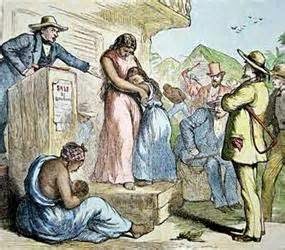Rum and pirates belong together just like peanut
butter and jelly. It’s hard to imagine one without the other. Part of this is
probably because rum was created and grew up along with the Golden Age of
Piracy, and in the same place.
Liquor made from sugar had been known for hundreds
– maybe thousands – of years, mostly in Asia. Marco Polo wrote about “sugar
wine.” Brum, a drink popular in Malaysia,
has existed throughout recorded time.
We don’t know where the word rum comes from.
Theories include an abbreviation of one of several Latin words, a Romani word
meaning “strong”, and rumbullion or rumbustion, two words that surfaced about
the same time as “rum” – in the mid 1600’s. Since both words are slang terms
for “uproar” or “loud chaos” it seems to me that it was the other way around.
We have sugar cane and the Irish to thank for rum.
When the British government began shipping Irish to Barbados as slaves, they
separated those people from home, family and friends. They also separated these
Irish slaves from whiskey.
But it’s hard to keep the Irish from their liquor.
These slaves found out that the molasses extracted from sugar cane could be
fermented, and then that the fermented substance could be distilled into the
liquor that we now call rum.
By 1654 – one year before the pirate Henry Morgan
came onto the historical stage - the name rum was firmly attached to the
popular, potent drink. By 1664, distilleries had begun to flourish in Boston
and Rhode Island, taking advantage of the higher technologies in those areas to
build larger distillation pots and a larger number of high-quality barrels.
This produced a more standardized product. For a while, Rhode Island rum joined
gold as a form of currency in Europe.
It was common at the time for
navies to issue rations of liquor to sailors. Once England captured Jamaica
(1655), they changed their liquor of choice from French brandy to Jamaican rum.
From then on, rum became a solid part of British navy life. The ration of rum
continued until July 31st, 1970, when it was discontinued because
other liquor was available for recreational use. This date is still remembered in
the British navy as “black tot day.”
For special occasions,
however, such as a royal wedding, birth or coronation, rum is still supplied.
The order for an extra tot of rum, which dates from the age of sail, is “splice
the mainbrace!” This commemorates an on-ship chore which was extremely
difficult and warranted an extra rum ration.
Many pirates learned to
sail and fight by serving in their national navy. They learned to like rum from
the same source. In Jamaica’s early days, navy support was considered too
slight to keep the island secure from the Spanish. The island’s governor lured
pirates to Port Royal and enlisted their support in guarding the island from the Spanish by
offering a safe trading port for fencing stolen goods and taverns filled with
bountiful rum to spend their ill-gotten gains on.
The pirate Henry Morgan,
knighted, retired and appointed Jamaica’s acting Governor, drank himself to
death in these taverns, reliving his glory days in the sweet trade. Rum and prostitution caused Port Royal to be
known as the “wickedest city on earth.”
One of rum’s many
nicknames was “kill devil.” A 1651 document from Barbados stated, "The
chief fuddling they make in the island is Rumbullion, alias Kill-Divil, and
this is made of sugar canes distilled, a hot, hellish, and terrible
liquor." Pirates and others drank it so consistently they became dependent,
and without it began to see hallucinations. Lack of rum on a pirate ship was a
cause for desperate action, including robbing ships that the pirates had previously
agreed were off-limits.
Rum encouraged the “triangle
trade” that was partially responsible for the region’s wealth, which in turn
drew pirates to the Caribbean. Merchant ships picked up sugar, rum and molasses
on Barbados and Jamaica, transported them to New England, where more rum was
distilled from the raw materials. Then this rum was taken to Europe and
exchanged for trade goods such as cloth and beads, which was then transported
to Africa and traded for slaves, which were taken back to the Caribbean to work
the sugar plantations.
This cemented the practice
of using African slaves, who were hardier than Europeans, and lived longer in
the tropics. It also encouraged regular trade routes, enabling the pirates to lay
in ambush in known areas.
Rum also encouraged
larceny inside the navy. When Admiral Nelson, England’s national hero, was
killed in action at sea, legend has it that his body was preserved by sealing
it inside a full cask of rum. But when the ship arrived back in port and the
cask was opened it was empty. Enterprising sailors had tapped it and drunk
every last drop, leaving only the Admiral’s body. After that, rum was often
referred to as “Nelson’s blood.”
Author Robert Lewis
Stevenson had a profound influence on the link between pirates and rum when he
included “Fifteen men on a dead man’s chest, Yo Ho Ho and a bottle of rum” in
his famous novel Treasure Island. And
Johnny Depp cemented it farther with Captain Jack Sparrow’s wandering walk and
question, “Why is the rum gone?”
In real life, pirates
drank pretty much anything that would get them drunk, but whiskey, brandy, wine
and gin have their own mythologies. Rum now belongs forever to the pirates,
famous in song and story.
Let’s raise a glass and
say, “Yo Ho!”





























